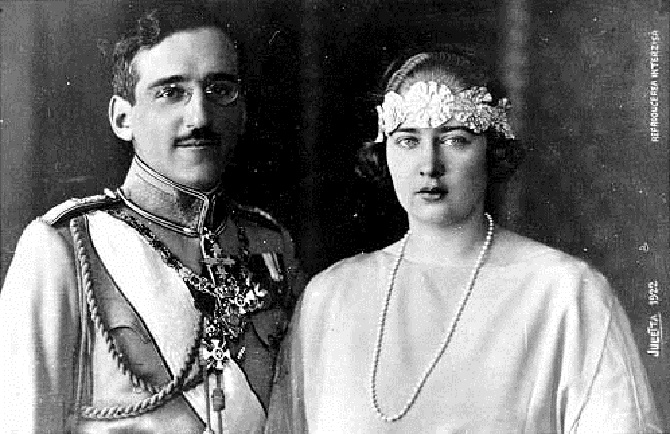The resting place of Queen Maria of Yugoslavia will be at the St George’s Church in Oplenac, Serbia. The five-domed church was built in the style known as Serbian–Byzantium, a sort of oriental Gothic style, between 1910 and 1930, by King Peter I who was a grandson of the founder of the royal family who led the Serbs in an uprising against the Ottoman Empire that had controlled the Balkans for centuries. The revolution was successful, the Ottomans were booted out and in 1811 Karadjordje was confirmed as the lawful ruler of Serbia and his heirs after him.
At St George’s Church four of Serbia’s kings and 18 members of the Karadjordje dynasty are buried in the crypt, their tombs made of onyx from Decani in Kosovo, and representing the pearl of Serbia’s cultural and historical heritage. The most important characteristic of church is the mosaic that covers much of the interior walls, made from Murano glass from Venice. I loved the huge candelabra which is made of melted weapons from the Battle of Kajmackalan in WWI and in the shape of the medieval crown of Serbia but upside down, symbolising Serbia’s mourning at the loss of their country at the Battle of Kosovo in 1389. Entry tickets are 300 Serbian Dinars which is around GBP2.5 or Euro 3. The price includes entrance to St George’s Church (the curator is happy to give you lots of information in English), King Peter’s house (a small summer villa built in 1912 for his own use and today a museum), the villa of King Alexander I and Queen Mary (closed to visitors at the moment) and entry to the tower and Church of Our Blessed Lady of Karadjordje Town, dating from 1811-1813.
For more information about travelling to Serbia, day tours or things to see and do in Serbia please email tara@readyclickandgo.com or check our website at www.ReadyClickAndGo.com












